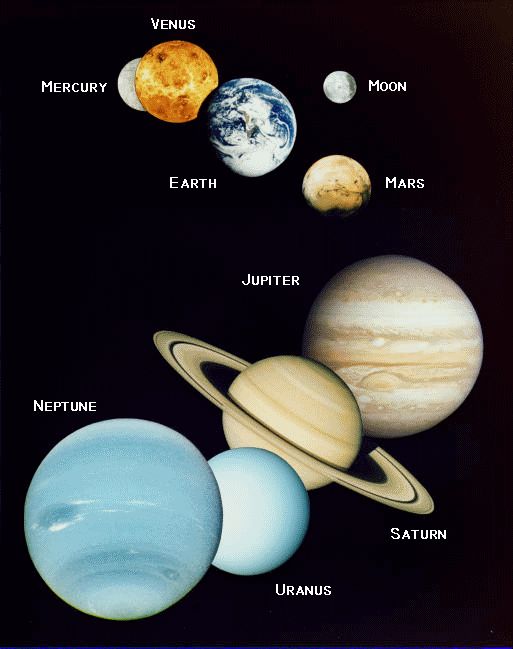As far back as recorded history goes, there have been two sets of opposing ideas, beliefs, theories, or teachings about the origin of the universe. It has either existed eternally with no beginning or end, or it was created at some point in time and will eventually come to an end. In the first part we examined the early cultural, religious, and somewhat philosophical views of how the universe began. We've also spent a little time looking at some ideas about our own beginnings from a religious and scientific point of view. In this section, we're going to take a brief excursion through the various theories that science has put forth to explain the origin of the universe
.
Steady State
The Big Bang Theory is naturalistic science’s preferred explanation for the origins of the universe. Even so, there are questions about the theory that persist. One attempt to fill the holes left in the Big Bang Theory is a concept first developed in the late 1940’s, known as Steady State Theory.
Steady State Theory proposes that matter is being continuously created, at the rate of a few hundred atoms per year. This would allow the density of the universe to remain constant as it expands. This violates the First Law of Thermodynamics, but then again, so does the Big Bang Theory.
Scientific discoveries have shed doubt on Steady State Theory, such as cosmic background radiation. This radiation was predicted by Steady State Theory, just as it was by the Big Bang Theory. Still, cosmic background radiation fits better into the Big Bang Theory. In the 1990’s, the discovery of accelerating galaxies renewed interest in the general concept of Steady State Theory. The accelerating universe discoveries have added a lot of uncertainty to the discussion of the Big Bang Theory.
Steady State Theory proposes that matter is being continuously created, at the rate of a few hundred atoms per year. This would allow the density of the universe to remain constant as it expands. This violates the First Law of Thermodynamics, but then again, so does the Big Bang Theory.
Scientific discoveries have shed doubt on Steady State Theory, such as cosmic background radiation. This radiation was predicted by Steady State Theory, just as it was by the Big Bang Theory. Still, cosmic background radiation fits better into the Big Bang Theory. In the 1990’s, the discovery of accelerating galaxies renewed interest in the general concept of Steady State Theory. The accelerating universe discoveries have added a lot of uncertainty to the discussion of the Big Bang Theory.
Plasma Theory
The "plasma theory," which rejects the big bang theory, is a recent and controversial concept of cosmology. Swedish Nobel laureate Hannes Olof Göst Alfvén is the chief proponent of the theory. He and his colleagues discredit the big bang theory in favor of electrical and magnetic processes involving plasma (hot electrical conducting gases). While the big bang cosmologists’ claim over 90 percent of the universe is invisible, primarily composed of dark matter, plasma theorists believe 99 percent of the matter is composed of plasma. The big bang universe is based solely on terms of gravity, using Albert Einstein's theory of general relativity; the plasma theory is based on electromagnetism.
Inflation Universe
In the corresponding theory of inflation, the Universe, because of properties of elementary particles not accounted for in the standard big bang models, expands for a fleeting instant at its beginning at a much higher rate than that expected for the big bang. This period, which is called the inflationary epoch, is a consequence of the nuclear force breaking away from the weak and electromagnetic forces that it was unified with at higher temperatures in what is called a phase transition.
Big Bounce
The Big Bounce is a theory about the formation of the Universe. It can be loosely related to the cyclic or oscillatory universe adaptation of the Big Bang. It states that the current Universe resulted from the collapse of a previous Universe. A kind of cosmic rebirth.
Cyclic Universe
The Cyclic Universe model does not replace the Big Bang theory but offers a potential alternative to certain aspects of the Big Bang that are longstanding problems. Some scientists are excited about its potential while others are cautious or skeptical. The Cyclic Universe model incorporates concepts from standard physics, string theory, and M-theory. For anyone who has ever wondered what lies beyond the Universe, the Cyclic Universe model may provide some answers.
Big Bang
The Big Bang Model is a broadly accepted theory for the origin and evolution of our universe. It postulates that 12 to 14 billion years ago, the portion of the universe we can see today was only a few millimeters across. It has since expanded from this hot dense state into the vast and much cooler cosmos we currently inhabit. We can see remnants of this hot dense matter as the now very cold cosmic microwave background radiation which still pervades the universe and is visible to microwave detectors as a uniform glow across the entire sky.

